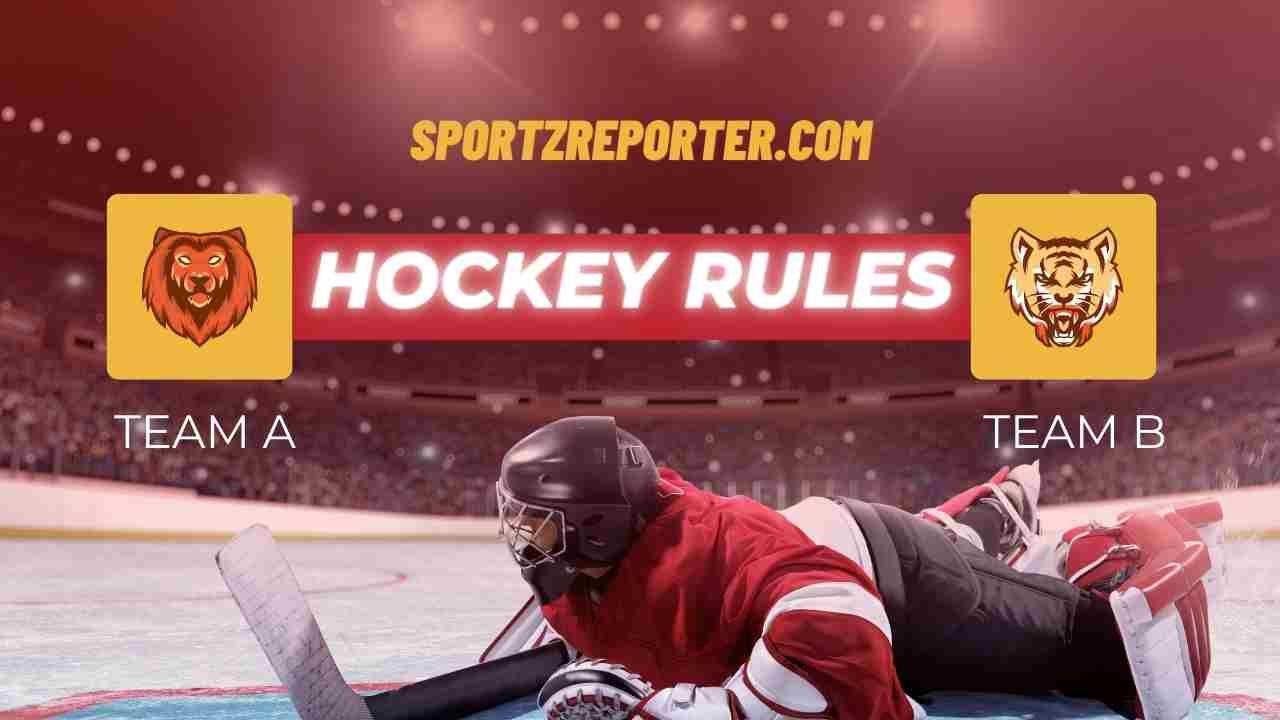There are various hockey rules that players are bound to follow. Otherwise, they get punished by umpires; adding to that, there are fouls as well, and if a player fouls, they again get punished for that. I will explain hockey rules, fouls, and punishment in this article.

SO WHAT ARE THE BASIC HOCKEY RULES?
Below are four basic hockey rules that every player is bound to follow.
- To hit the ball, players can only use the flat side of the stick and not any other part of their stick or body.
- Only the goalkeeper can capture or hit the ball using his body other than the stick, whereas other players are not allowed to.
- To score a goal, players must hit the ball from inside the circle; however, if the ball is hit from outside the circle and goes into the goal, it will not be counted as a goal. Moreover, players can only score a goal in three ways, i.e., field goal, penalty goal, and a penalty stroke. A field goal can only be scored inside the striking circle in an open play.
- Hockey is a non-contact sport where players are restricted from tripping, pushing, charging, interfering, and physically handling the opponent players, which will be otherwise termed as a foul and result in a free hit or a penalty corner against the offending team. This is one of the infringed hockey rules that occurs very frequently.
TYPES OF HOCKEY FOULS
Below are seven basic hockey fouls that lead to penalties in most cases.
- Obstruction is a basic foul awarded against offending players who use their bodies or hockey sticks to stop opponent players from reaching the ball.
- 3rd-party Obstruction is a foul that happens when a player becomes a barrier between the ball and the opponent hockey player, allowing his team player to play the ball unobstructed.
- Advancing foul is awarded against those offending players who propel, shove, or advance the ball using body parts.
- A back stick foul is awarded to the non-offending team when an offending player hits the ball with the rounded part of the hockey stick rather than using the flat side of the stick.
- Hockey Stick Interference foul is awarded when an offending player hits the opponent player’s stick using his hockey stick, whether intentionally or unintentionally.
- Undercutting foul is awarded to the non-offending team when an offending player lifts the ball in an unsafe manner.
- Sticks foul occurs when a player perilously raises his hockey stick near another player.
Read this article: HOW MANY PLAYERS ARE ON A BASKETBALL TEAM
PUNISHMENT TYPES ACCORDING TO HOCKEY RULES
Similar to other sports, hockey also has punishments to ensure everyone abides by the rules and regulations to play the game professionally. Fouls are treated in three basic ways, which are discussed in detail below.
- FREE HIT
Players are restricted from playing outside the scoring circle in case an offense occurs outside the scoring circle. The non-offending team is awarded a free play where the violation occurs. When a free hit is awarded, opposing team players must stay 5 yards away until a non-offending team player takes the hit.
- PENALTY CORNER
When an offense team player either commits a foul inside the “striking circle” or deliberately smashes the ball outside the boundary lines, a penalty corner is awarded to the attacking team. It takes place 10 yards from the nearest goalpost, where other attacking team players are required to stay outside the striking circle, and five defenders, including the goalkeeper, will remain behind the end line until the ball is hit. Once the game continues, all other players can continue their game.
- PENALTY STROKE
This punishment is again given to the attacking team against defenders when the latter tries to commit a foul while preventing attackers from scoring the goal. In the case of a penalty stroke, there is only one attacker and a defender, i.e., a goalkeeper where the attacker is 7 yards away from the goalpost.
Read this article: HOW TO PLAY CRICKET?
HOW MANY UMPIRES ARE THERE CONFERRING TO HOCKEY RULES?
There are only two umpires in a hockey match where. Each one is responsible for standing for a half. Their responsibility is to make sure everyone follows the rules and regulations, and if a player either breaks a rule or commits a foul, then to punish them for that.
Usually, they show either a red, yellow, or green card when a player commits a foul. Green cards mean a warning to the player where he is advised not to break the rule again. Similarly, a yellow card means the player will stay outside the field for five minutes without playing the game, and a final red card means a serious offense has been committed.
Read this article: TOP 10 BEST TENNIS PLAYERS OF ALL TIME

